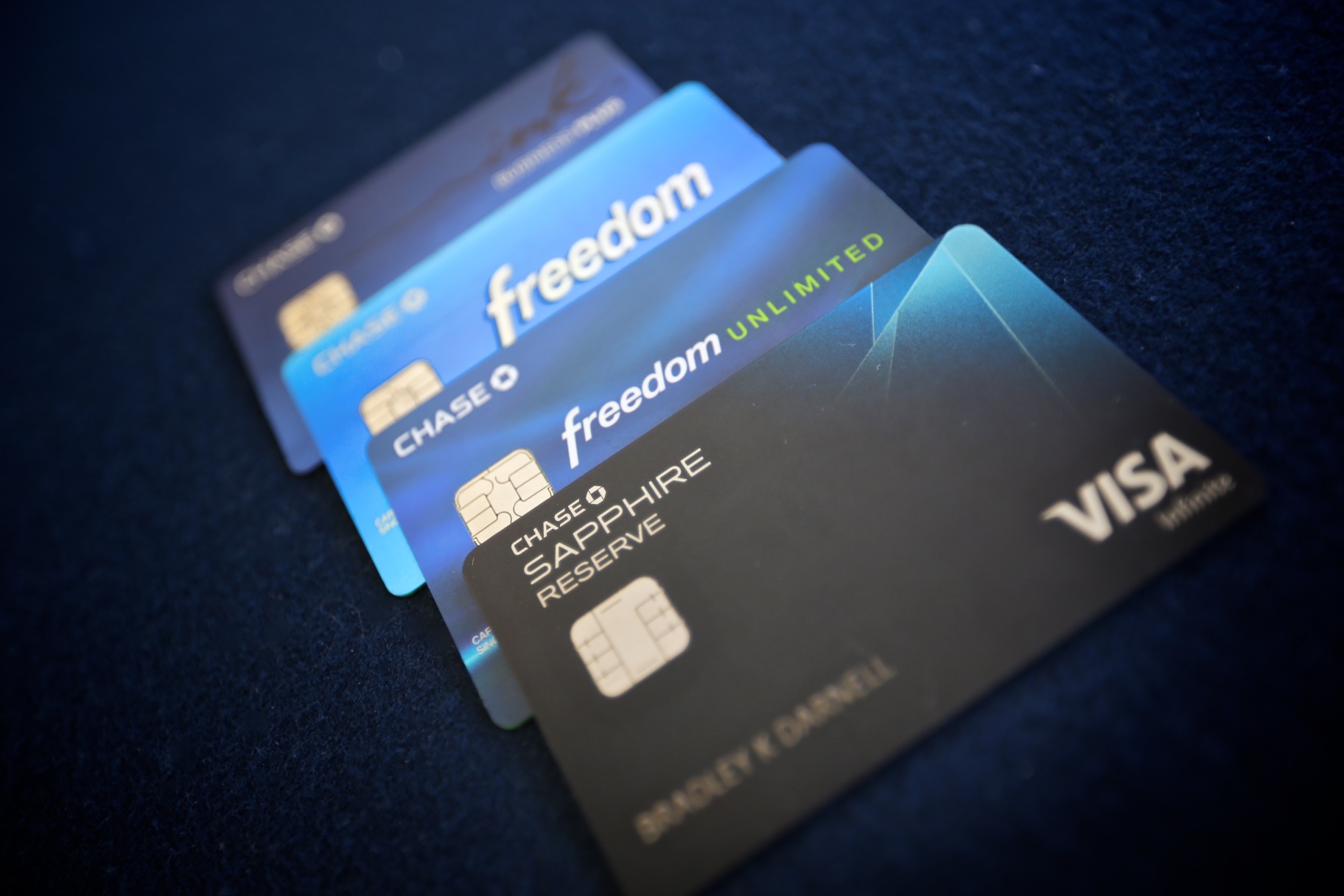One question I sometimes receive in emails is “what credit score do I need to get approved for the Sapphire Preferred?” I usually prefer not to give any specific credit score needed for an approval because banks like Chase look at so many different factors and you never know what they’ll decide.
Still, there are a few things you can look at to get a good sense of your Chase Sapphire Preferred approval odds.
Here’s a look at the credit score and income requirements for the Sapphire Preferred and some tips on how you can increase your approval odds.
Interested in finding out the top travel credit cards for this month? Click here to check them out!
Table of Contents
Credit factors needed for the Chase Sapphire Preferred
Before we talk about credit scores, let’s talk about how different credit factors affect your Chase Sapphire Preferred approval odds.
This means factoring in things like your credit account history, utilization, and payment history.
Credit scores can often be deceptive because you can have a “great score” in the 700s but with little to no credit history, you’ll likely struggle to get approved for the Chase Sapphire Preferred.
Tip: Use WalletFlo for all your credit card needs. It’s free and will help you optimize your rewards and savings!
Credit history
If you have virtually no credit history (only a few months of history) you might want to look at some cards for fair credit scores that you can use to build up your score before applying for Chase cards.
If you’ve got only a little bit of credit history (one year or more), then consider going with a card like the Chase Freedom, which is easier to get approved for than the Sapphire Preferred.
Once you have the Freedom for around 6 months or so, you might be ready to try your odds with the Sapphire Preferred (depending on how your score looks).
Utilization
Utilization is how much of your total credit limits you are currently using (or utilizing). You can figure out this number by dividing the amount of credit currently being used by your overall credit limit.
So if you’re currently using $5,000 worth of credit and your overall credit limits is $10,000 then you would divide $5,000 by $10,000 to get 50%.
This factor can be very important. You want your overall utilization to at least be below 30% but I prefer to keep mine around 5%.
However, you need to also pay attention to the utilization on your specific credit cards.
If you have another Chase card that’s maxed out or that has a very large outstanding balance, that’s going to look very bad when you apply for another one of their credit cards. In that case, you’d definitely want to pay that credit card down first.
Late payments
Another thing to be aware of is how late payment can affect your approval odds. If you have lates within the past year or two, you might get some push back because of those. This is especially true if your late payments were with Chase.
If you have really fresh late payments (that just hit within the past few months), I would probably wait several months before I tried applying.
Boosting your credit score
There are a few tricks you can use to boost your credit score so that when you apply you’re in a little better shape when it comes to your credit score. You can read about these methods here.
Credit score needed for the Chase Sapphire Preferred
Assuming you have a few years of account history (with any bank), I’d recommend waiting until your credit score is close to 720 to apply for the Sapphire Preferred.
Some report that the average credit score for Sapphire Preferred approvals is about 740, which sounds about right. But this is by no means a strict minimum requirement.
Applicants have gotten approved for the Sapphire Preferred with credit scores in the 600s, so that can definitely happen.
But if your score is on the lower side, the importance of having an established credit history and solid income might be even more important.
Thus, I would not apply for the Sapphire Preferred with a score like a 680, unless I had some other strong factors in my credit report.
Related:
- What Is a Perfect Credit Score?
- How to Raise Your Credit Score by 200 Points
- Is a 730 Credit Score Good for Credit Cards?
What credit bureau will Chase pull from?
There are three major credit bureaus: Experian, Equifax, and TransUnion.
Some banks like American Express like to pull from one credit bureau most of the time (Experian).
However, Chase is harder to predict — I’d say expect an Experian pull and one additional bureau but it could be very location-specific.
Knowing which bureau will be pulled is helpful because if you have one dinged up credit report but others that are in better condition, obviously you don’t want a bank using your bad credit report.
By knowing which banks pull which bureau you can go for credit card issuers that will rely on your best credit score. You can find out how to search which credit bureau your local bank might pull here.
Income needed for the Chase Sapphire Preferred
Another important thing to note is that your stated income is definitely a factor that affects your Chase Sapphire Preferred approval odds. Typically, you want an income of at least somewhere in the $40,000 range.
If you do enough research, you’ll see some data points of approvals with income in the $30,000 and even $20,000 range, but I would not like my odds with those figures.
If it were me, I’d only feel comfortable applying for the Sapphire Preferred with an income of $45,000+.
The lower your income, the lower your credit line will probably be (which will usually be a minimum of $5,000).
Also, note that even a really high income will not make up for a horrible credit score.
If you have a lower income (below or around $30,000), I’d advise to apply for the Chase Freedom and then just start building your credit up for the Sapphire Preferred at a later date.
Tip: The Credit Card Accountability, Responsibility and Disclosure, or Credit CARD, Act of 2009, allows you to include the income of a spouse or family member that is reasonably available to you as long as you are 21 years of age or older.
- You can read more data points on income needed for Chase credit cards here.
Sapphire Preferred credit limits
The Sapphire Preferred requires at least a $5,000 minimum credit limit because it is a Visa Signature credit card.
But you can get credit limits that are much higher. I’m not sure what the average credit limit is for all applicants but myself and several others I know have received high credit limits in the $20,000+ range.
So if your income is on the higher side, you probably stand a good shot of getting a high credit limit.
You can read about getting a credit limit increase with Chase here.
Improve your odds
There are a number of things you can do to improve your odds of being approved.
Open up a Chase bank account
One thing you can do if you think you’re on the cusp of being approved is open up a Chase bank account.
If you maintain that bank account for a few months, it might help push the needle toward the direction of getting approved. Just make sure you maintain it well and don’t get dinged with overdraft fees or anything else that would make you appear less financially responsible.
Read up on the Chase rules
If you think that you’re ready to apply for the Sapphire Preferred, then make sure you read about the Chase application rules first. The Sapphire Preferred is subject to the Chase 5/24 Rule (along with other rules) and these articles will walk you through those restrictions. Or better yet, sign-up for the free app, WalletFlo to get a jump start on your credit card eligibility.
Read up on Chase reconsideration
Also, if you’re a borderline candidate, there’s a high chance that your Sapphire Preferred application will end up in a Chase reconsideration phone call.
This is basically your chance to plead your case on why you should get approved for the card you’re applying for and so it can be a huge factor for getting your credit card application approved.
For that reason, make sure you read up on my tips for the Chase reconsideration line. That will show you how to handle a recon call and possibly get Chase to overturn a rejection and approve you for Sapphire card.

Chase Sapphire Preferred approval times
The Chase reconsideration article above will also give you an idea of what to expect for Chase Sapphire Preferred approval times.
When you’re not instantly approved, you might get messages that a decision will be made in 30 days, two weeks, or 7 to 10 days. Believe it or not, these messages can reveal a lot about your approval odds.
This article will explain to you what to expect and walk you through how to handle the application and reconsideration process.
If you read and study the above articles, you’ll be able to avoid getting denied for reasons that are well within your control.
Sapphire Preferred pre-approval
The Chase Sapphire Preferred is one of the Chase cards that allows you to get pre-approved.
You can check for pre-approvals online or you can go to a Chase branch near you and see if you have any special targeted offers. Every now and again, the offer targeted offers that are even higher than what’s given out to the public so it’s something to consider. You can read all about how Chase pre-approvals work here.
Final word
The Chase Sapphire Preferred is a great card and Chase won’t just approve anyone for it. If you have a decent credit history (a few accounts 3 to 5 years old or more), a decent score (somewhere close to 720), and an income of $50,000+ you probably have some good odds of being approved.
But if you have a thin credit profile (even with a credit score in the 700s) or low income (below $40,000), you might want to hold off on applying for the Sapphire Preferred until you get that score/income up some more and allow your credit card accounts to age longer.
In the end remember that’s it’s impossible to know what Chase will or will not do with your application, so sometimes you just have to apply to get your answer.
Daniel Gillaspia is the Founder of UponArriving.com and the credit card app, WalletFlo. He is a former attorney turned travel expert covering destinations along with TSA, airline, and hotel policies. Since 2014, his content has been featured in publications such as National Geographic, Smithsonian Magazine, and CNBC. Read my bio.


